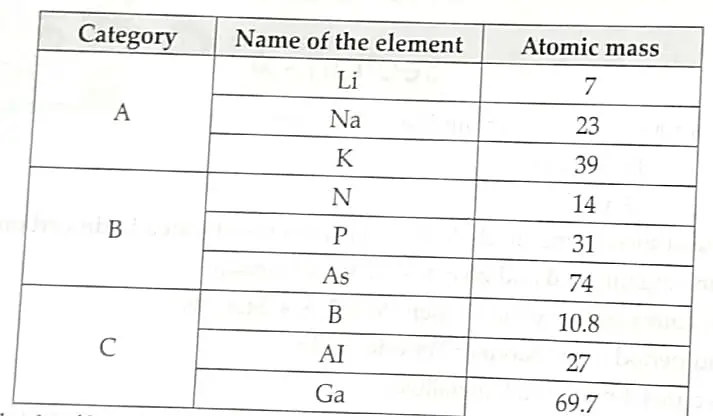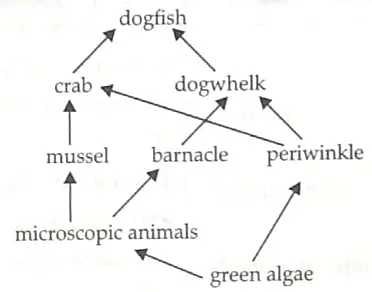Science Term 2 Sample Paper 2022 (Unsolved)
Class 10 Science Term 2 Sample Paper 2022, (Science) exams are Students are taught thru NCERT books in some of the state board and CBSE Schools. As the chapter involves an end, there is an exercise provided to assist students to prepare for evaluation. Students need to clear up those exercises very well because the questions inside the very last asked from those.
Sometimes, students get stuck inside the exercises and are not able to clear up all of the questions. To assist students, solve all of the questions, and maintain their studies without a doubt, we have provided a step-by-step NCERT Sample Question Papers for the students for all classes. These answers will similarly help students in scoring better marks with the assist of properly illustrated Notes as a way to similarly assist the students and answer the questions right.
Class 10 Science Term 2 Sample Paper 2022
General Instructions:
(i) All questions are compulsory.
(ii) The question paper has three sections and 15 questions.
(iii) Section – A has 7 questions of 2 marks each; Section – B has 6 questions of 3 marks each; and Section – C has 2 case based questions of 4 marks each.
(iv) Internal choices have been provided in some questions. A student has to attempt only one of the alternatives in such questions.
Section – A
1. The formulae of four organic compounds are given below: [2]
A: C2H4 B: CH3COOH
C: C2H5OH D: C2H6
(a) Which one of these compounds A, B, C or D is an unsaturated hydrocarbon?
(b) Identify the organic acid and give its structural formula.
2. The electronic configuration of an element M is 2, 8, 4. State its: [2]
(a) group and period in the Modern Periodic Table.
(b) State it is a metal/non-metal /metalloid.
3. (a) What is the fate of the ovules and the ovary in a flower after fertilization?
(b) How is the process of pollination different from fertilization? [2]
4. Reena studied about asexual reproduction in plants in the school. While playing in the ground of school premises she observed that fallen leaves of ‘Bryophyllum’ on the ground produced new plants. Help her to find the answers for the following questions about it. [2]
(a) What type of asexual reproduction is seen in Bryophyllum?
(b) Give advantage of practicing this process for growing same type of plants.
5. Teacher was explaining Mendel’s experiment to the students in the class. She discussed about the plants that Mendel used for his experiment. She asked the students to find out the following answers. [2]
(a) Name the plant that Mendel used for his experiment.
(b) What type of progeny was obtained by Mendel in F1 and F2 generations when he crossed the tall and short plants?
OR
Differentiate between dominant and recessive traits [2]
6. The change in magnetic field lines in a coil is the cause of induced electric current in it. [2]
(a) Name the underlying phenomenon.
(b) On what factors does the direction of induced current in the given phenomena depend?
OR
State the rule to determine the direction of a: [2]
(a) magnetic field produced around a straight conductor-carrying current,
(b) force experienced by a current-carrying straight conductor placed in a magnetic field which is perpendicular to it.
7. Plastic cups were used to serve tea in trains in early days-these could be returned to the vendors, cleaned and reused. Later, Kulhads were used instead of plastic cups, Now, paper cups are used for serving tea. [2]
(a) What are the reasons for the shift from plastic to kulhads and then finally to paper cups?
(b) Suggest alternatives to the usage of plastic bags.
OR
“Improvements in our lifestyle have resulted in greater amounts of waste generation.” [2]
(a) Give two examples to support the given statement.
(b) How can you help in reducing the problem of waste disposal? Write any two methods.
Section – B
8. Mendeleev was a Russian chemist, who contributed the most for the development of periodic table of elements. [3]

(a) What was the basis of Mendeleev’s classification of elements ?
(b) List two achievements of Mendeleev’s Periodic table.
(c) List any two observations which posed a challenge to Mendeleev’s periodic law.
9. The compounds that are formed due to sharing of electrons between two atoms, have covalent bonds. [3]
(a) How are they different from ionic compounds?
(b) List any two properties of covalent compounds.
OR
Methane, ethane, propane, etc., are alkanes. These compounds have similar chemical properties because they possess same functional groups. [3]
(a) Which term is used to refer such type of series of organic compounds ?
(b) Do methanol, ethanol, propanol belong to same series ?
(c) Write the molecular formula of first two members of homologous series having functional group-Br.
10. In a pea plant, the trait of flowers bearing purple colour (PP) is dominant over white colour (pp). Explain the inheritance pattern of F1 and F2 generations with the help of a cross. State the visible characters of F1 and F2 progenies. [3]
11. (a) Compute the heat generated while transferring 96,000 coulomb of charge in two hours through a potential difference of 40 V.
(b) An electric kettle consumes 1 kW of electric power when operated at 220 V.
A fuse wire of which of the following rating must be used for it, (i) 4 A (ii) 5 A? [3]
12. An electric bulb is rated at 200 V-100 W. Its resistance is 400 Ω [3]
(a) Calculate the energy consumed by 3 such bulbs if they glow continuously for 10 hours for complete month of November.
(b) Calculate the total cost if the rate is ₹ 6.50 per unit.
OR
4 kW heater is connected to a 220 V source of power. Calculate [3]
(a) the electric current passing through the heater.
(b) the resistance of the heater.
(c) the electric energy consumed in 2 hour use of the heater.
13. Carefully study the given food web from a sea shore and answer the questions: [3]

(a) The mussel can be described as primary/secondary consumer in the above food chain. Justify your answer.
(b) Why do all food chains start with plants?
Section – C
This section has 02 case-based questions (14 and 15), Each case is followed by 03 sub-questions (a), (b) and (c). Parts (a) and (b) are compulsory. However, an internal choice has been provided in part (c).
14. Sneha performed a cross between plants with purple flowers and plants with white flowers, the offspring of F1 generation all had white flowers. When the F1 generation was self-crossed, it was observed in the F2 generation that out of 100, 75 flowers were white.
(a) Which type of cross it is? Monohybrid/dihybrid? Define the term. [1]
(b) In a monohybrid cross between two heterozygous individuals, what is the percentage of pure homozygous individuals obtained in F1 generation? [1]
(c) List any two contrasting characters other than roundness of pea plants that Mendel used in his experiments with pea plants. [2]
OR
State the Mendel’s first law of inheritance. [2]
15. While performing an experiment, a coil of insulated copper wire is connected to a galvanometer by a student. What happens if a bar magnet is:
(a) Pushed into the coil ? [1]
(b) Withdrawn from inside the coil ? [1]
(c) Two circular coils A and B are placed close to each other. If the current in the coil A is changed, will some current be induced in the coil B? Give reason. [2]
OR
It is not essential that the magnet should move to induce current in a coil. Explain. [2]